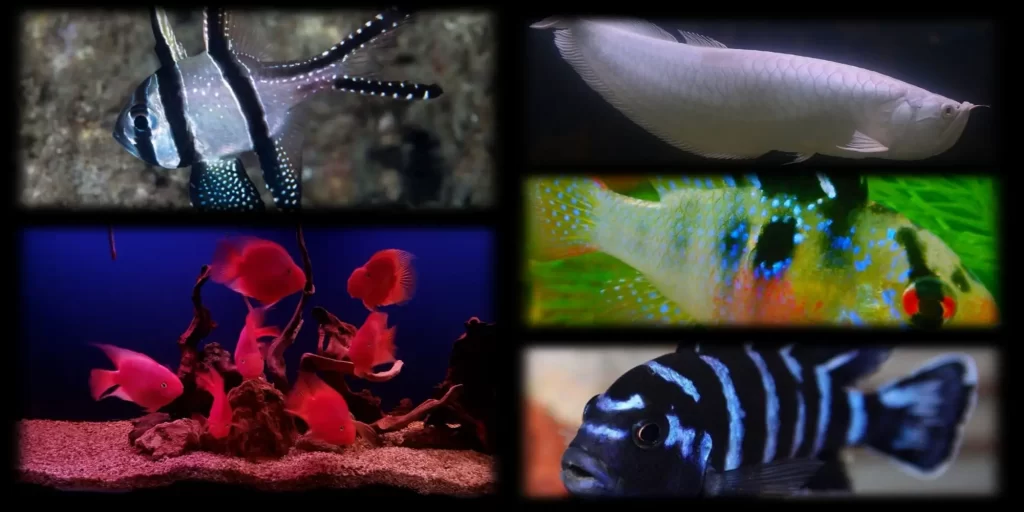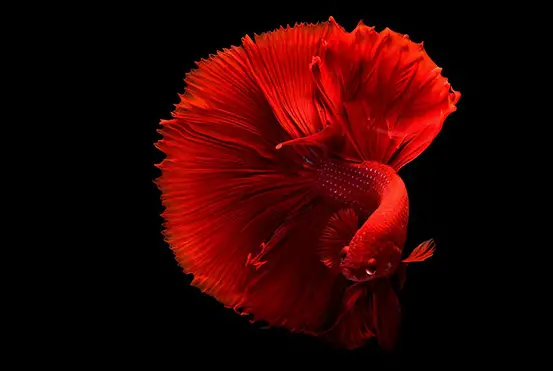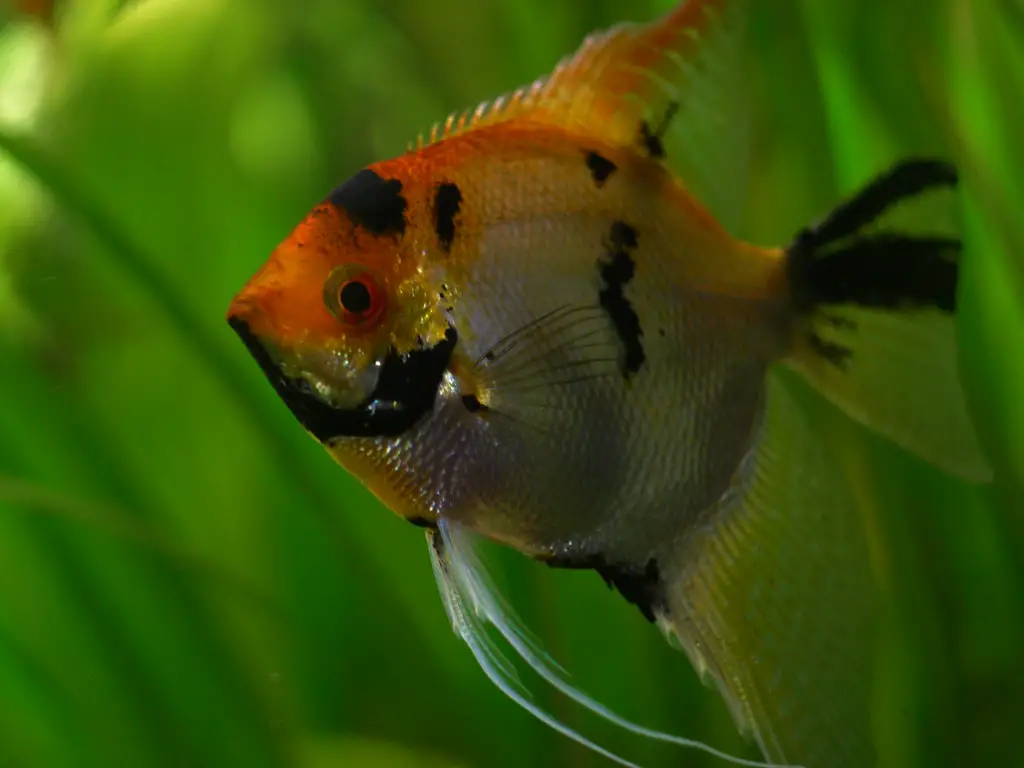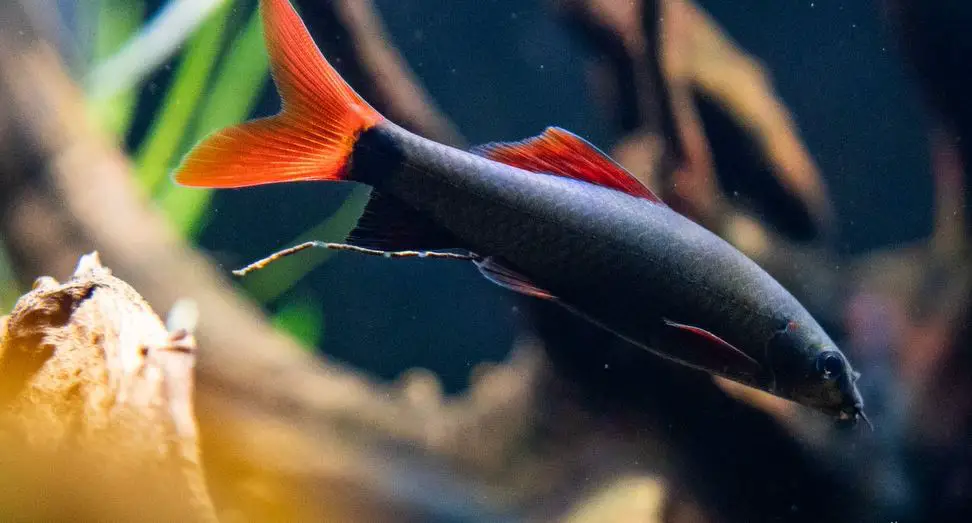Many people assume that fish are neglectful parents who don’t care for their young. But this belief is a myth – the reality is that some fish species demonstrate remarkable parenting skills and go to great lengths to ensure their offspring survive and thrive.
While it’s true that some fish like guppies and silver dollars provide no parental care, there are also dedicated fish parents that will vigilantly stand guard over their nests. Some fish take parental care to such an extreme level that they carry fries around inside their mouth. These fish are called mouth brooders.
With an understanding of these parental fish types, aquarists can better support breeding and avoid mistakenly separating caring parents from vulnerable offspring.
Do Fish Take Care of Their Young?
Well, the answer might surprise you. Some fish indeed look after their young ones, while others might see them as a quick snack.
Certain fish species, like the mouth breeders, go to great lengths to protect their offspring. These dedicated moms carry their babies in their mouths until they’re old enough to venture out on their own.
However, not all fish are as nurturing. Some species lay their eggs and swim away, leaving the young ones to fend for themselves. In fact, in certain cases, the young fish might become a tasty meal for other fish or even their own parents. It’s a tough world out there in the underwater realm, where survival often depends on instinct and luck.
So, to answer the question, yes, some fish do take care of their young, showing remarkable parental instincts. From protecting them in their mouths to creating safe spaces, fish parenting comes in various forms. Yet, for others, the young ones must navigate the waters alone from the very beginning, facing challenges that shape their survival instincts from day one.
List Of Fish That Take Care Of Their Young
In this section, I am going to list some of the excellent parents in the fish-keeping world. You will learn about how they care for their fries and some exciting facts. After reading this, you will not be confused over whether your fish is protecting the fries or attacking them.
Some of the excellent parents in the fish-keeping world are:
1. Cichlids – The Devoted Parents
In the fish-keeping world, cichlids are renowned for their parental dedication. Many cichlid species form monogamous breeding pairs and share parenting duties cooperatively. Here are some of the most attentive cichlid parents:
Discus Cichlids
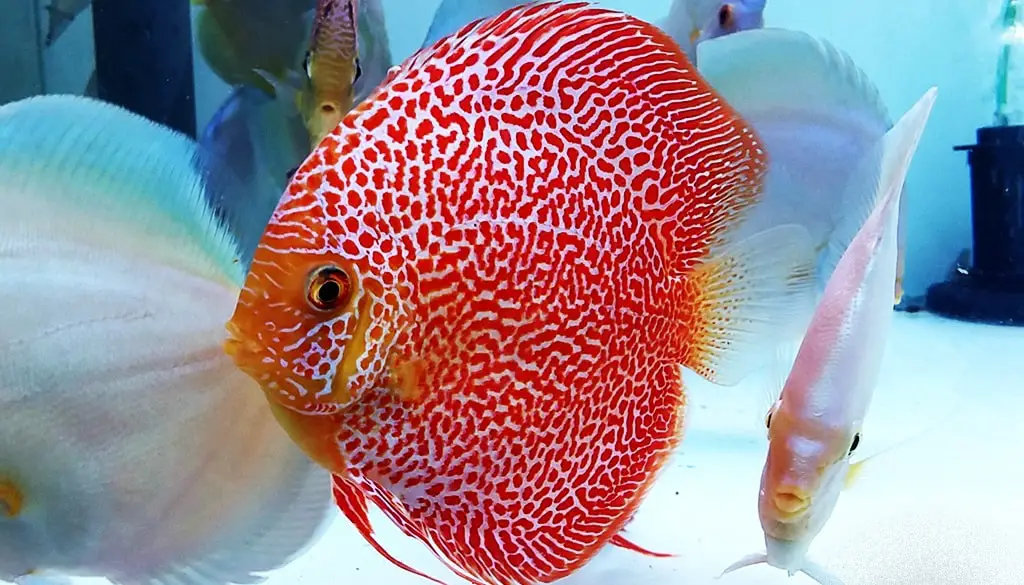
Discus Cichlids, native to the Amazon, are renowned for their striking disc-shaped bodies and vivid hues. These elegant fish exhibit remarkable parental care, with both males and females actively involved in nurturing their offspring. When it comes to parenting, Discus Cichlids are top contenders.
During the breeding process, Discus parents display exceptional dedication. They meticulously tend to their eggs and newly hatched fry, ensuring their safety and well-being. One fascinating aspect of Discus parenting is their secretion of a nutritious mucus from their bodies. This mucus serves as the primary source of sustenance for the fry during their initial weeks of life.
Moreover, Discus Cichlids employ various strategies to safeguard their young ones. Parents diligently fan their fins to oxygenate the eggs, maintaining optimal conditions for healthy development. They also play a vigilant role in the maintenance of the breeding environment, removing any fungus or dead eggs that could threaten the survival of the remaining brood.
Furthermore, Discus Cichlids exhibit protective behavior by creating sheltered spaces for their fry. They scoop pits in the substrate, offering a secure haven where the young can thrive away from potential predators. This combination of nurturing behaviors highlights the strong parental instincts displayed by Discus Cichlids, making them stand out among aquatic caregivers.
Blood Parrot Cichlid
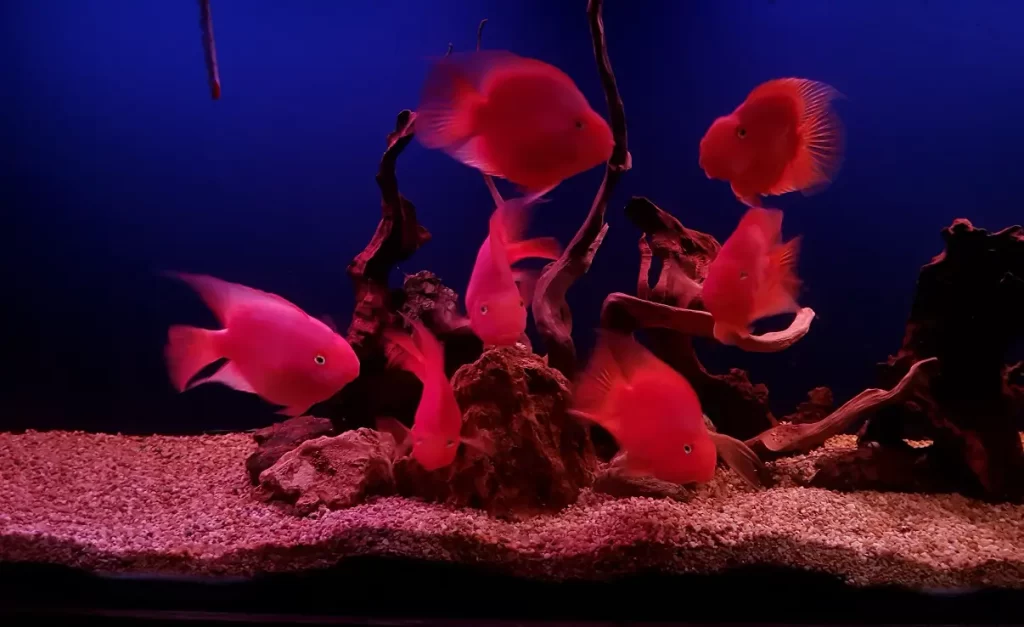
Blood Parrot Cichlids are a unique man-made hybrid known for their distinctive beak-like mouths and vibrant coloration. Despite being a human creation, these cichlids exhibit remarkable parental instincts, making them stand out in the aquatic world.
During the breeding season, Blood Parrot Cichlids display strong parental bonds. The female takes on the responsibility of safeguarding the eggs, ensuring they remain protected from potential harm. Meanwhile, the male assumes the role of a sharp guardian, patrolling the territory to ward off any intruders that may pose a threat to the nest.
Once the eggs hatch, the parental care intensifies. Blood Parrot Cichlid parents create a nurturing environment for their offspring by sheltering them in carefully constructed pits within the substrate. These holes serve as secure hiding spots where the fry can safely develop under the watchful eyes of their guardians.
Interestingly, Blood Parrot Cichlids exhibit extended parental care, with the fry remaining under their parents’ watchful gaze for up to six weeks after hatching. During this time, the parents continue to provide protection and guidance, ensuring the young cichlids have the best possible chance of survival in their aquatic habitat.
This dedication to parental duties underscores the strong bond that exists within Blood Parrot Cichlid families, highlighting their role as attentive caregivers in the underwater world.
Convict Cichlids
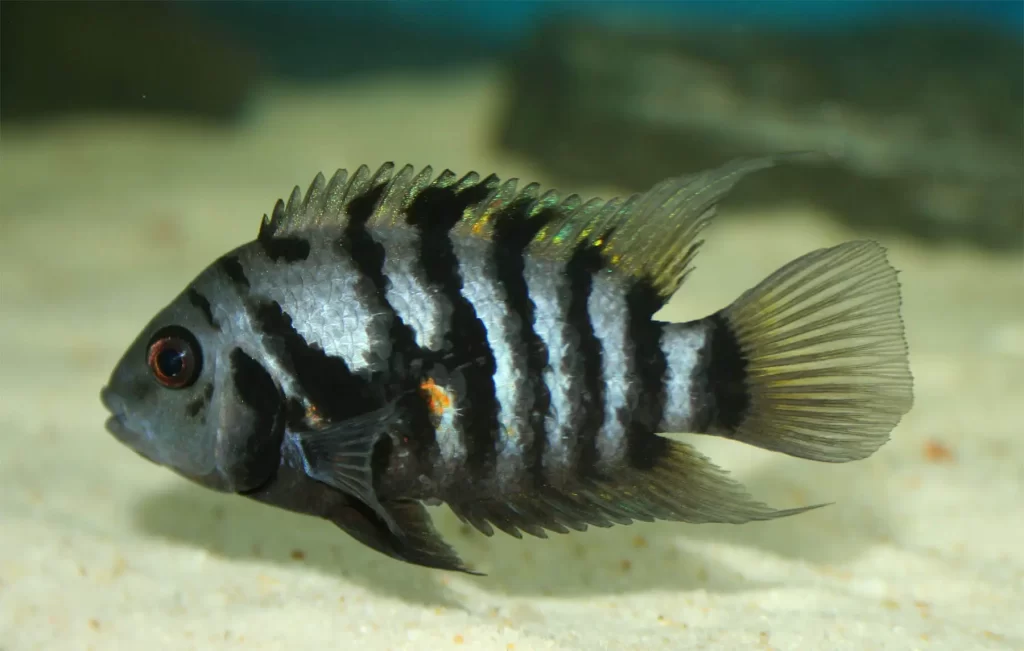
Convict Cichlids, named for their striking zebra-striped black and white pattern, are native to the vibrant waters of Central America. These small yet resilient cichlids exhibit fascinating parental behaviors, showcasing their dedication to family life in the aquatic realm.
Breeding pairs of Convict Cichlids form strong bonds as they embark on the journey of parenthood together. The female takes on the responsibility of tending to the eggs, meticulously fanning them with her fins to ensure proper oxygenation and circulation. Meanwhile, the male stands guard, patrolling the perimeter of the nest to ward off potential intruders that may threaten the safety of the brood.
Once the eggs hatch, the parental duties of Convict Cichlids heighten. The female continues to play a vital role in protecting the vulnerable hatchlings, providing them with shelter and guidance as they navigate their new environment. Meanwhile, the male remains sharp, maintaining a watchful eye on the surroundings to ensure the safety of the family unit.
A fascinating aspect of Convict Cichlid parenting is their provision of supplementary nutrition to the fry. The young cichlids may graze on the parents’ skin mucus, gaining valuable nutrients that contribute to their growth and development.
Ram Cichlids
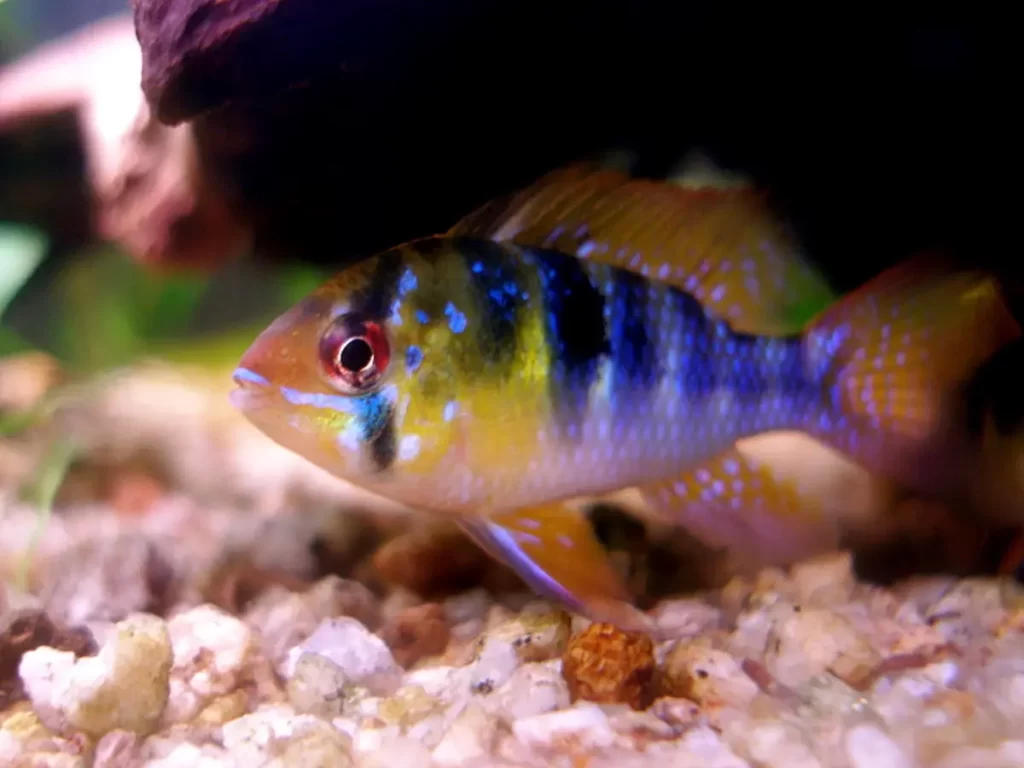
Ram Cichlids, often referred to as “rams” due to their metallic sheen, are a captivating dwarf cichlid species well-suited for small community aquariums. Despite their small size, these colorful fish exhibit remarkable parenting behaviors, underscoring the importance of biparental care in their familial structure.
Within the domain of Ram Cichlids, the concept of teamwork is essential. Breeding pairs of rams work in perfect harmony to ensure the well-being of their offspring. The female takes on the primary role of nurturing the eggs and fry, providing them with attentive care and guidance as they begin their journey into the world.
Meanwhile, the male Ram Cichlid assumes the critical task of defending the family unit against potential threats and intruders. With unwavering alertness, he patrols the surroundings, ready to confront any danger that may jeopardize the safety of the nest.
The synchronized efforts of both parents highlight the importance of collaboration in the parenting process. By dividing responsibilities and working together seamlessly, Ram Cichlids create an optimal environment for the growth and development of their young.
2. Mouthbrooders – Keeping Fry Safe
Some fish have developed the ingenious strategy of mouthbrooding to protect their vulnerable eggs and fry. During the incubation period, the parent will hold the eggs safely in their mouth and shelter newly hatched fry until they’re free-swimming. Some dedicated mouthbrooders include:
Banggai Cardinalfish
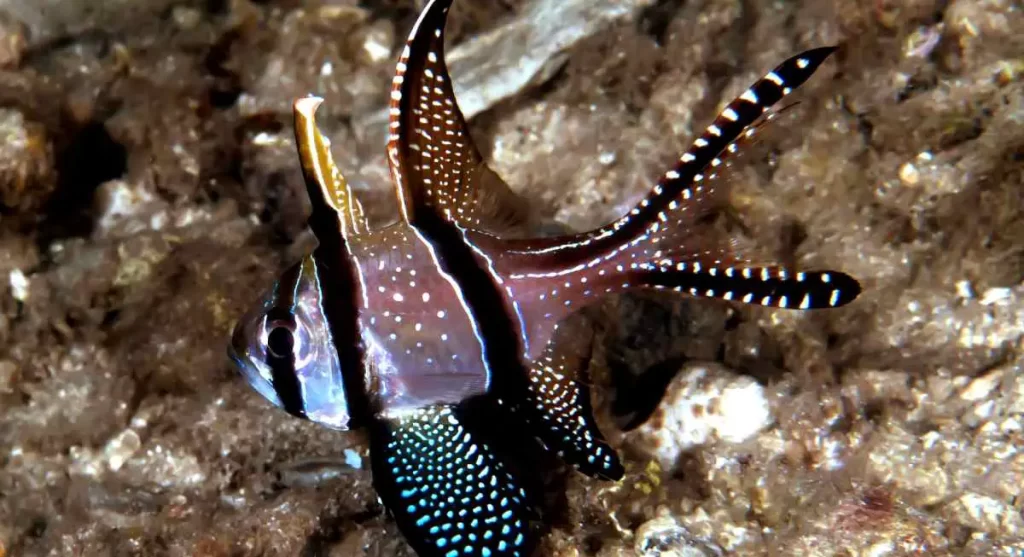
The Banggai Cardinalfish, characterized by its elongated fins and vibrant patterning, stands out as a distinctive saltwater species renowned for its unique parenting behavior. Among the array of marine life, the Banggai Cardinalfish is one of the rare mouthbrooders, showcasing extraordinary dedication to the care of its young.
In the world of Banggai Cardinalfish, it is the male that assumes the role of primary caregiver. After the female lays her eggs, the male collects them in his mouth, where they are incubated for an extended period, often exceeding a month. During this time, the male abstains from eating, focusing solely on the task of nurturing the developing eggs.
With precis eattention, the male Banggai Cardinalfish tends to the eggs within his mouth, ensuring optimal conditions for their growth and development. He exhibits remarkable wisdom, selectively expelling any eggs that show signs of decay or fungal infection, thereby safeguarding the remaining brood.
Upon hatching, the fry are released from the safety of the male’s mouth, venturing out into the surrounding marine environment. Here, they form schools around corals, where they continue their journey of growth and exploration under the watchful eyes of their parents.
Jawfish
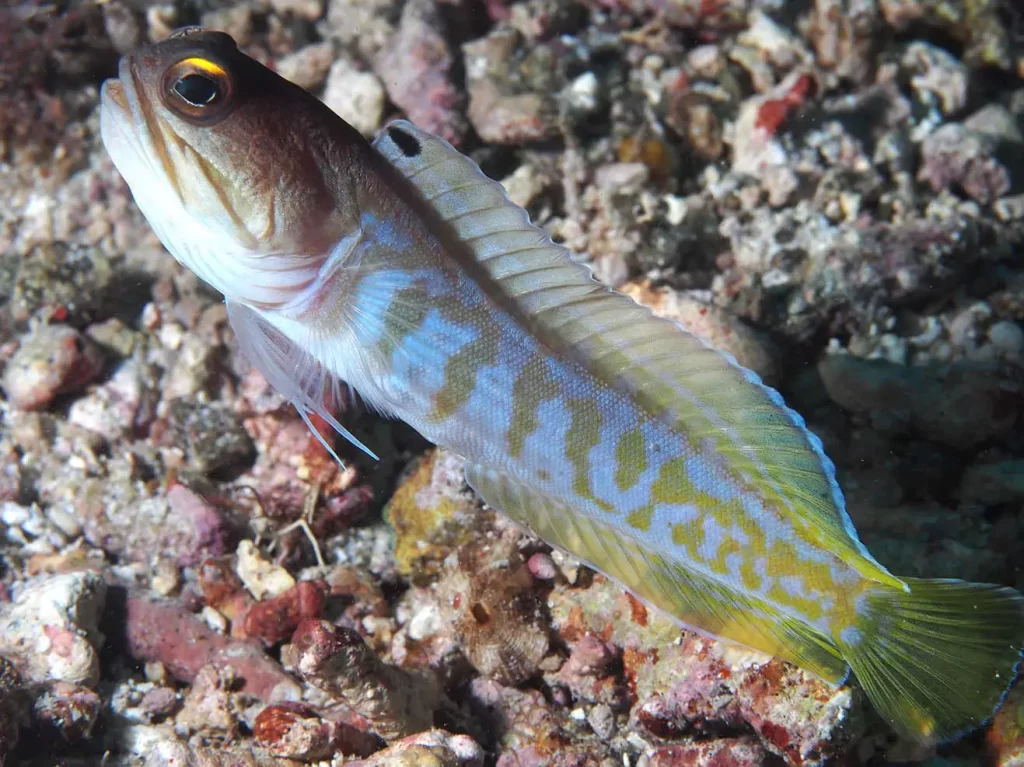
Jawfish, characterized by their superior mouths, derive their name from this distinctive feature. Among the underwater dwellers, Jawfish exhibit fascinating parenting behavior, showcasing their commitment to ensuring the survival of their offspring.
The male Jawfish takes center stage while parenting, assuming the responsibility of safeguarding the eggs. Nestled deep within a burrow, he creates a safe haven where the eggs are incubated with meticulous care. Remarkably, the male Jawfish abstains from eating for days, dedicating himself entirely to the task of nurturing the developing eggs.
Throughout the incubation period, which spans several days, the male Jawfish displays unwavering diligence. He diligently fans the eggs with his fins, ensuring proper oxygenation and circulation for their optimal growth and development. Additionally, he meticulously rotates the eggs within his mouth, attending to each one with precision and care.
As the eggs reach maturity, they hatch into fry, ready to embark on their journey into the underwater world. With his parental duties fulfilled, the male Jawfish watches proudly as the fry swim off on their own, equipped with the resilience and strength instilled during their time under his protective care.
Arowana
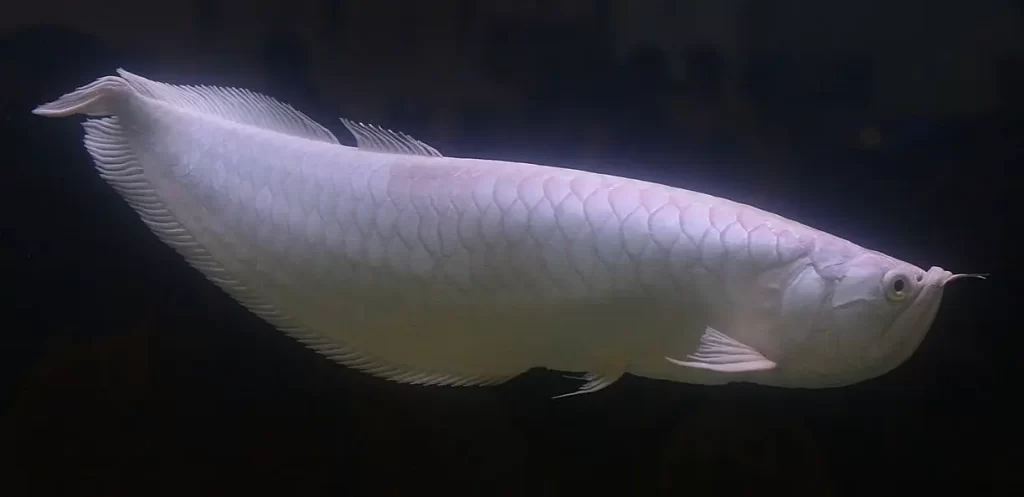
Arowanas, also known as dragonfish, stand as majestic and ancient creatures in the aquatic realm, often revered for their impressive size and captivating presence. Among their remarkable traits is their unique approach to parenting, which underscores the importance of protection and dedication in ensuring the survival of their offspring.
Following the ritual of reproduction, the female Arowana lays her eggs, marking the beginning of the parental journey. In a fascinating display of paternal care, the male Arowana assumes responsibility for the eggs, taking them into his mouth for safekeeping.
Despite potential threats and challenges, such as the female’s attempts to ward him off, the male Arowana stands steadfast in his commitment to safeguarding the eggs. For an extended period, spanning approximately 60 days, he shelters the eggs within his mouth, providing them with a secure environment for their development.
Throughout this incubation period, the male Arowana demonstrates remarkable resilience and patience, enduring potential attacks while ensuring the well-being of the precious cargo he carries. Despite the challenges posed by external forces, his unwavering determination remains unwavering.
Upon reaching maturity, the eggs hatch into tiny fry, ready to explore the world beyond their father’s protective embrace. Through his selfless actions and unwavering devotion, the male Arowana sets a profound example of parental sacrifice and resilience, highlighting the intricate dynamics of life in the aquatic realm.
African Cichlids
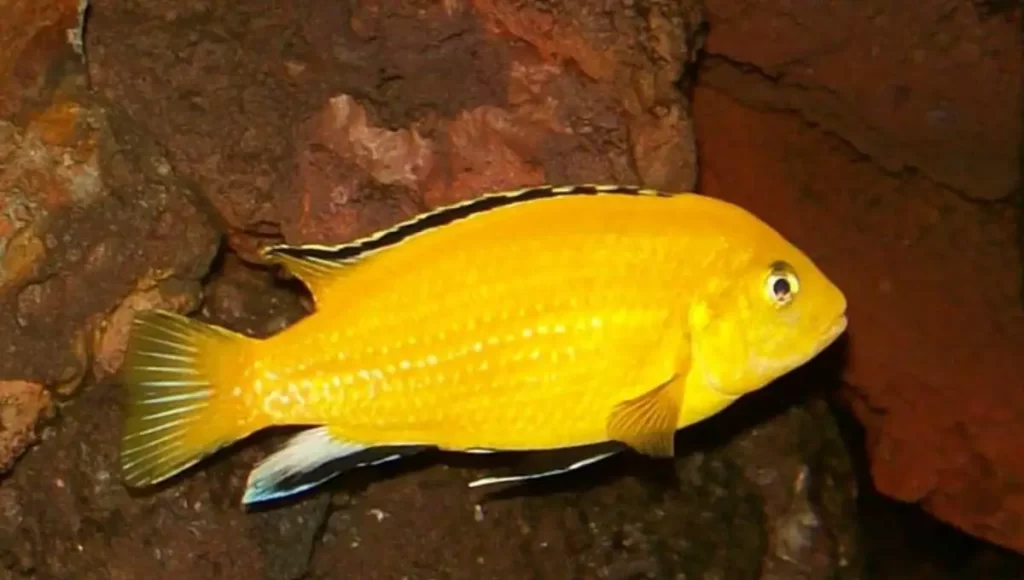
African Cichlids, particularly those inhabiting the rift lakes of Africa, exhibit a fascinating parenting behavior known as mouthbrooding. This unique method of parental care underscores the intricate social dynamics within cichlid communities and highlights the remarkable adaptations these fish have developed to ensure the survival of their offspring.
Among African Cichlids, mouthbrooding is a common practice observed in various species. One notable example is the Yellow Lab, a popular aquarium fish cherished for its vibrant coloration and engaging behavior. After the female African Cichlid lays fertilized eggs, the male takes on the responsibility of incubating them within his mouth.
For a period of up to six weeks, the male African Cichlid abstains from eating, dedicating himself entirely to the task of nurturing the developing eggs. During this time, he diligently fans the eggs with his fins, ensuring proper oxygenation and circulation for their optimal growth and development.
As the incubation period progresses, the eggs hatch into tiny fry, signaling the next phase of the parental journey. The male African Cichlid continues to provide care and protection to the young fry, allowing them to absorb their yolk sacs before venturing out into the world.
3. Nest Guardians – Protecting Eggs
Some fish diligently guard their eggs deposited on a substrate or vegetation. By keeping watch over the nest site, fanning the eggs with their fins, and picking off predators, these fish ensure their eggs remain safe. Here are some of the most protective nesters:
Angelfish
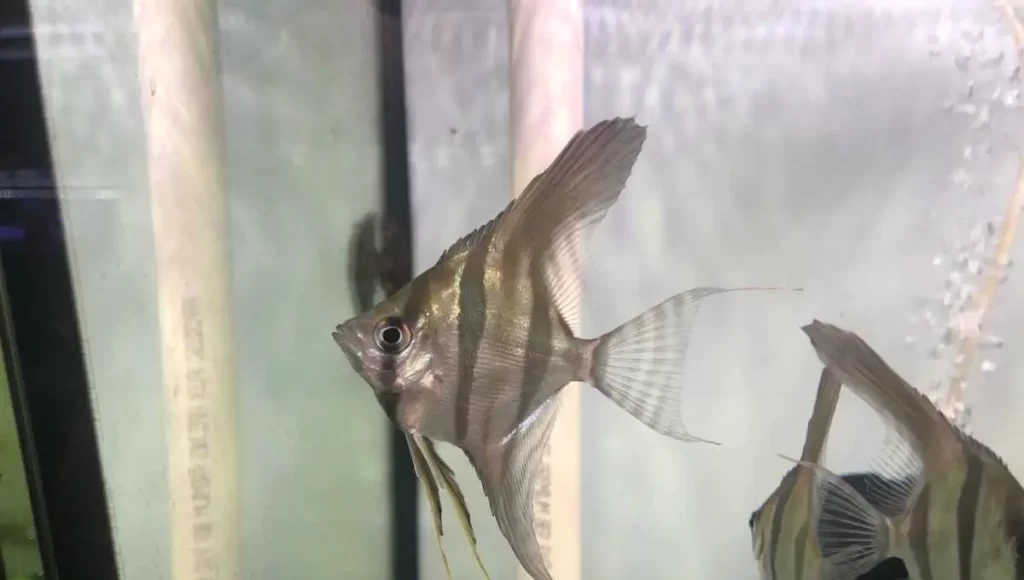
Angelfish, distinguished by their tall, discus-shaped bodies and elegant, sweeping fins that evoke the image of angelic wings, are revered inhabitants of freshwater aquariums worldwide. Beyond their captivating appearance, Angelfish exhibit fascinating parental behaviors that highlight their commitment to nurturing their offspring.
During the breeding season, Angelfish engage in the ritual of spawning, often depositing their eggs on surfaces such as slate or leaves within the aquarium environment. Both parents play an active role in the spawning process, diligently guarding the eggs with unwavering vigilance.
With attentive care and dedication, the Angelfish parents take turns safeguarding the precious clutch of eggs, ensuring they remain protected from potential threats and predators. This cooperative effort underscores the strong bond between male and female Angelfish, as they work together to ensure the success of their offspring.
As the eggs hatch, giving rise to tiny fry, the parental duties of the Angelfish continue. The parents diligently shepherd the newly hatched fry, providing guidance and protection as they navigate their environment. Even as the fry become free-swimming, the Angelfish parents remain vigilant, ensuring the safety and well-being of their offspring until they are ready to venture out on their own.
Betta Fish
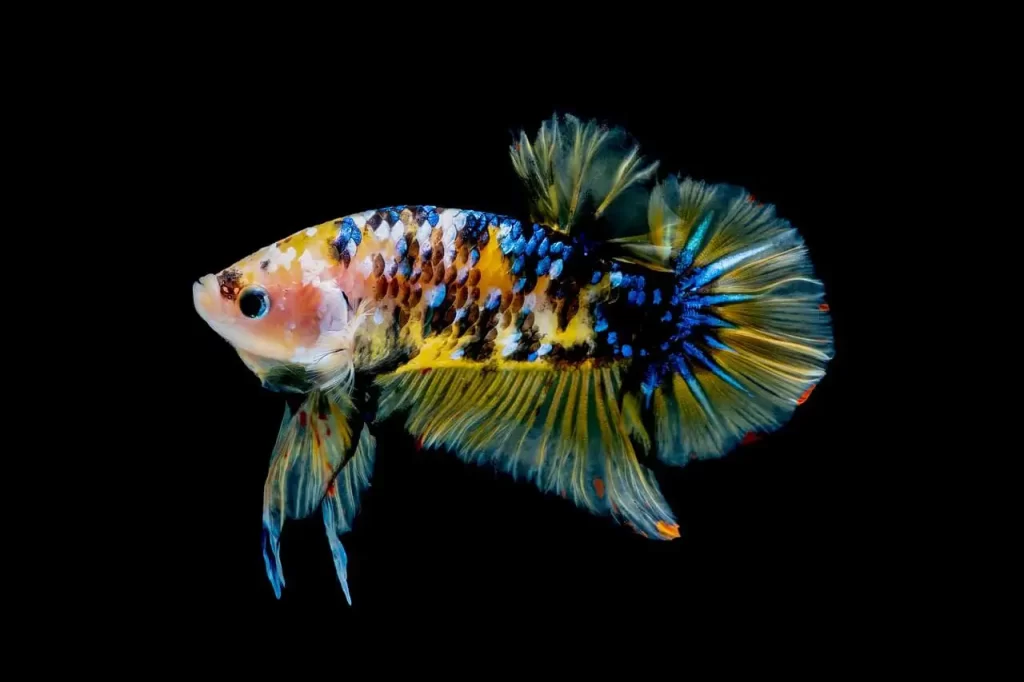
Betta fish, also known as Siamese fighting fish, are renowned for their vibrant colors and elaborate fin displays. These small freshwater fish are native to Southeast Asia and are popular pets due to their striking appearance.
One fascinating aspect of Betta fish is their unique parental care behavior. The male Betta constructs a bubble nest at the water’s surface using saliva and plant matter. He fiercely guards this nest, ensuring its integrity. When the female releases her eggs into the nest during the breeding process, the male chases her away and assumes sole responsibility for caring for the eggs.
The male Betta diligently tends to the nest, maintaining it and protecting the eggs from potential threats. After about 1-3 days, the eggs hatch, and the male Betta continues his caretaking duties. He keeps a close watch over the newly hatched fry, corralling them back into the nest if they stray.
Rainbowfish
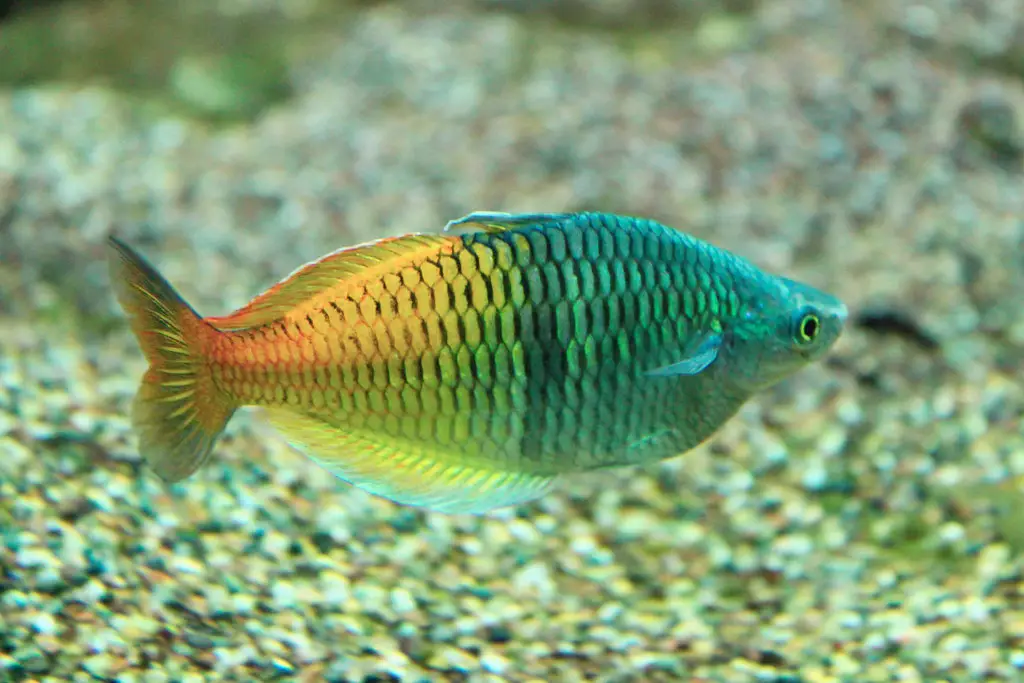
Rainbowfish are a diverse group of freshwater fish known for their vibrant colors and active behavior. They are native to Australia, New Guinea, and nearby islands, where they inhabit various aquatic environments, including rivers, lakes, and streams.
One fascinating aspect of Rainbowfish is their breeding behavior, which involves the creation of impressive underwater nests. During breeding, the male Rainbowfish meticulously constructs nests using vegetation, providing a safe haven for the eggs. He vigorously defends the perimeter of the nest, warding off potential threats to ensure the safety of the eggs and fry.
While the male guards the nest, the female Rainbowfish hovers over it, protecting the eggs and engaging in behaviors such as fanning them to maintain oxygen flow and water circulation. This collaborative effort between male and female Rainbowfish highlights their dedication to ensuring the survival of their offspring.
After the eggs hatch, the fry remain under the watchful care of both parents for several days. They receive protection and guidance until they are ready to venture out on their own, marking the completion of the parental care cycle.
Catfish
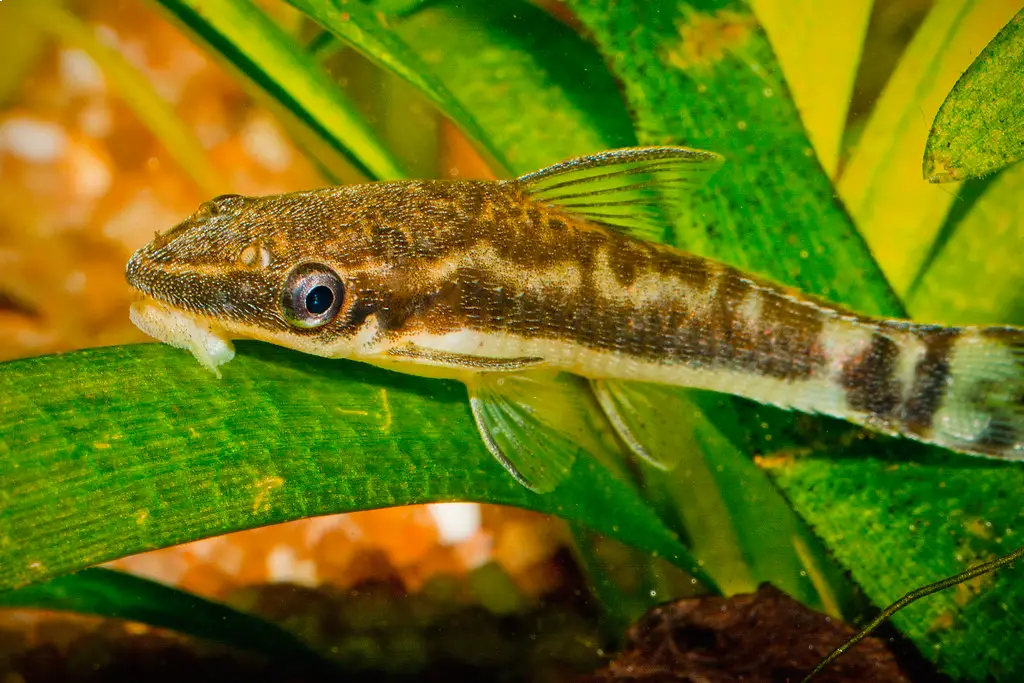
Catfish encompass a diverse group of freshwater fish known for their distinctive barbels and whisker-like tails. These bottom-dwelling fish are found in rivers, lakes, and ponds worldwide, thriving in a variety of aquatic habitats.
Several species of catfish, including Plecos and Corydoras, exhibit varying degrees of parental care. For instance, male Plecos diligently guard adhesive eggs laid on surfaces such as rocks or submerged vegetation. They use their fins to fan and clean the eggs, preventing the growth of fungus and ensuring their viability.
In some cases, catfish take parental care to another level by actively protecting their newly hatched fry. Certain species, like the mouthbrooding catfish, may even carry the fry in their mouths briefly, providing them with a safe haven from potential predators.
Killifish
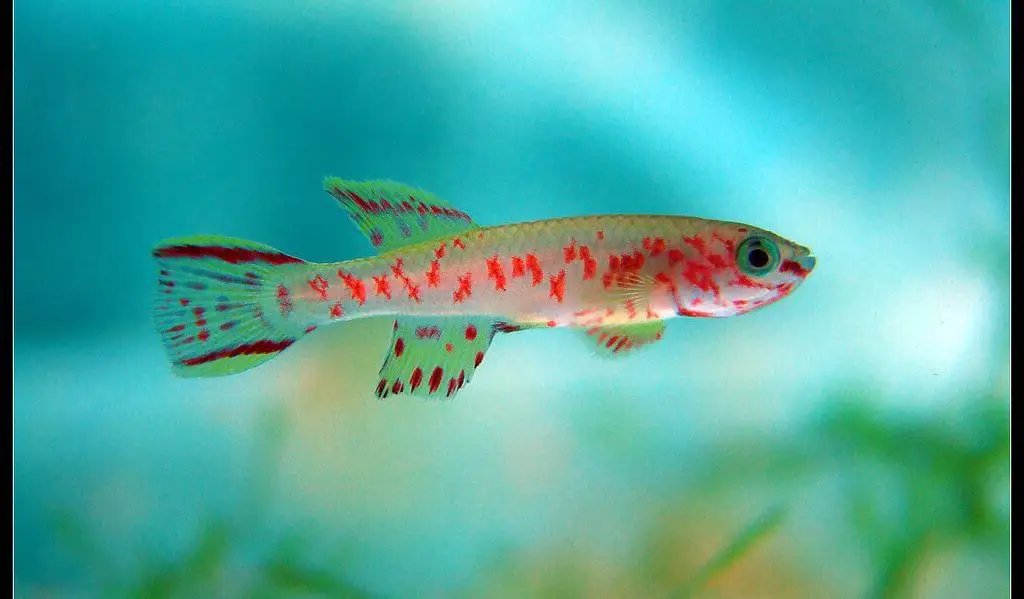
Killifish are a diverse group of freshwater and saltwater fish known for their vibrant colors and unique breeding habits. They inhabit a variety of aquatic environments, including rivers, streams, and temporary pools, where they display remarkable adaptability to fluctuating water conditions.
Killifish exhibit an fascinating breeding strategy characterized by their approach to parental care. Females typically lay their eggs in the substrate, often among vegetation or debris, and then abandon them. The eggs remain dormant in the substrate until conditions are favorable for hatching, which can occur after a period of several weeks or even months.
Once the eggs hatch, the fry emerge and are left to fend for themselves. However, despite the initial lack of parental involvement, Killifish demonstrates remarkable care for their offspring after hatching. Both parents actively engage in guarding the fry, herding them together and providing protection from potential threats.
If the parents sense danger or perceive a threat to the fry, they swiftly guide the young fish to safer locations, such as dens or areas with dense vegetation. This behavior highlights the parental instincts and protective measures undertaken by Killifish to ensure the survival of their offspring in dynamic and sometimes challenging aquatic environments.
Caring for Fry of Parental Fish
When keeping fish species known to care for their young, there are essential steps aquarists can take to ensure the successful raising of fry into adulthood. Providing the right environment and support can significantly enhance the survival rate of the offspring:
1. Leave parents with eggs/fry undisturbed in the main tank
When fish parents have eggs or newly hatched babies (called fry), it’s important not to disturb them by moving them to a different tank or separating them from their home.
For fish, moving them can cause a lot of stress. This stress can make the parents forget about their babies or even decide to eat them! It’s like if someone took away a parent’s babies—they might get worried and not know what to do.
So, by leaving the fish parents and their babies alone in their main tank, we help them feel safe and comfortable. This way, they can focus on taking care of their little ones without any worries.
2. Remove tankmates that may prey on eggs/fry
Sometimes, other fish in the tank might want to eat the eggs or baby fish (fry). Just like how some big animals might eat smaller ones in the wild, certain fish in the tank, like gouramis and tetras, might see the tiny fry as snacks.
To keep the baby fish safe, it’s important to remove these potential “bad guys” from the tank. By taking out the fish that might eat the fry, we create a safer environment for the baby fish to grow up peacefully.
This way, the parents can relax knowing that their babies are protected, and the fry can grow up without any big fish trying to eat them for lunch!
3. Provide hiding spots
Just like how kids like to hide in forts or behind trees during games, baby fish (fry) also need hiding spots to feel safe.
In the fish tank, it’s important to have lots of plants, caves made of rocks, or pieces of driftwood where the baby fish can hide. These hiding spots help the fry escape from other fish that might be a bit too pushy or even want to eat them!
Having lots of hiding places makes the tank feel like a safe and cozy home for the baby fish. It’s like having your own secret hideout where you can go whenever you want to feel safe and protected.
4. Feed small foods
Just like how parents give their kids food that’s the right size for them, fish parents also need to feed their baby fish (fry) tiny meals.
For baby fish, it’s important to provide small and easy-to-eat meals, like tiny particles called infusoria, powdered flakes, or small brine shrimp. These foods are like little snacks that the baby fish can munch on. The parents show the fry how to eat by demonstrating, just like how your parents might teach you how to use a fork or spoon.
Feeding the baby fish the right-sized food helps them grow big and strong. It’s like making sure they have the perfect meals that match their size, just like how you have meals that are just right for you!
5. Maintain clean, warm water
Ensuring a clean and warm environment is crucial for the well-being of baby fish, known as fry. These little fish are sensitive, and dirty water or sudden temperature changes can be harmful to them.
To keep the fry healthy, it’s important to regularly change some of the water in their tank. This helps remove waste and keeps the water fresh, creating a comfortable living space. Think of it like cleaning your room to make it a pleasant and safe place to be.
In addition to cleanliness, maintaining a stable and warm temperature is essential. Aquarists use devices like heaters to regulate the water temperature. Consistent warmth is like providing the fry with a cozy and stable environment, preventing them from getting too cold.
6. Avoid overcrowding the tank
Imagine if you had to live in a tiny room with lots of other people—it would feel crowded and uncomfortable, right? Well, fish can feel the same way if there are too many of them in a small tank!
It’s important to make sure there’s enough space in the tank for all the fish to swim around comfortably. When the tank is crowded, it can make the fish feel stressed and upset. Just like how you might feel cranky if you don’t have enough space to move around, fish can become grumpy too!
By giving the fish enough room to spread out, it helps them feel happier and less stressed. Plus, when there’s plenty of space, the parents can watch over their babies more easily and make sure they’re safe.
Conclusion
I think I have discussed most, if not all, of the common fishes that. As a fish-keeper, you might stumble upon one day. After reading this, you will surely not be mistaken whether your fish is attacking the fries or protecting it. Also, the fries of the fish that I have mentioned above don’t require much care as their parents look after them.
You should just make sure that there are no threats from bigger animals, and the temperature is a bit warmer than usual. Therefore, I suggest you go through this article one more time and know about how different kinds of fish care for their young ones.
Reference
Image Credit:

